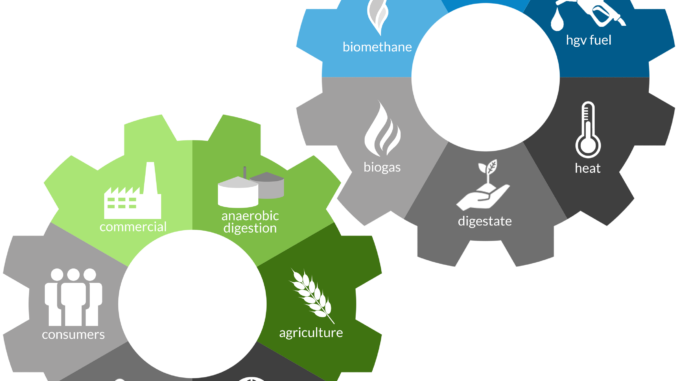
Waste-to-energy (WtE) or energy-from-waste (EfW) is the process of creating energy in the form of electricity or heat from the incineration of garbage. WtE is a form of energy recovery. Most WtE processes produce electricity directly through combustion, or produce a combustible fuel commodity, such as methane, methanol, ethanol or synthetic fuels.
Burning trash, or incineration, is without a doubt one of the oldest, and simplest methods used by humans to dispose of their waste. Environmental concerns over the past several decades borne from fears of toxic gases and cancer-causing substances being released into the air we breathe resulted in a significant reduction in the number of operating facilities which dispose of trash in this manner.
Municipal solid waste (MSW), often called garbage, is used to produce energy at waste-to-energy plants and at landfills.
- biomass, or biogenic (plant or animal products), materials such as paper, cardboard, food waste, grass clippings, leaves, wood, and leather products
- nonbiomass combustible materials such as plastics and other synthetic materials made from petroleum
- noncombustible materials such as glass and metals
MSW is usually burned at special waste-to-energy plants that use the heat from the fire to make steam for generating electricity. The remainder of the combustible MSW was non-biomass combustible material, mainly plastics. Many large landfills also generate electricity by using the methane gas that is produced from decomposing biomass in landfills. Producing electricity is only one reason to burn MSW. Burning waste also reduces the amount of material that would probably be buried in landfills.
To make sure the energy is generated cleanly, there are a number of high-tech pollution controls. That includes a baghouse to capture particulate matter (such as mercury), carbon injections to absorb heavy metals, dioxins and furans, and the addition of lime to neutralize acid gases. Computer systems closely monitor pollutant levels to make sure they remain as low as possible.
But some communities and environmentalists question whether those measures are enough, while waste-to-energy facilities are rejected in places where it is still more economical to send waste to landfills. There are also concerns over harmful greenhouse gas emissions, the sustainability of energy recovery plants and whether or not they inhibit recycling efforts. Carbon savings come from the offsetting of methane emissions that would have been released if the ton of waste had gone to a landfill. Methane is 21 percent more potent as a global warmer than carbon dioxide.
More energy is saved by reusing materials instead of destroying them. Also, rather than being burned, biomass could be composted and used for energy recovery.
When the trash being burned contains items like household batteries and tires, the emissions can be quite toxic. Heavy duty pollution controls help minimize emissions, but problems persist.
Let’s stop treating symptoms and start treating causes. Let’s start thinking in terms of improving on truly renewable energy solutions and finding and implementing effective waste management options
References:
- http://www.altfuelsnow.com/conservation/waste-to-energy.shtml
- https://www.eia.gov/energyexplained/?page=biomass_waste_to_energy
- https://www.huffingtonpost.com/robin-madel/a-burning-question-should_b_930837.html
- https://www.scientificamerican.com/article/does-burning-garbage-to-produce-energy-make-sense/
Compiled By- Dr. Bhawana Asnani.
Happy to see Reviews, Additions, Suggestions and Comments, further.

Thanks for your help and for writing this post. It’s been great.
Thank you for your help. I must say you’ve been really helpful to me.
An interesting discussion is value comment. I think that you must write more on this matter, it won’t be a taboo subject however typically individuals are not enough to talk on such topics. To the next. Cheers